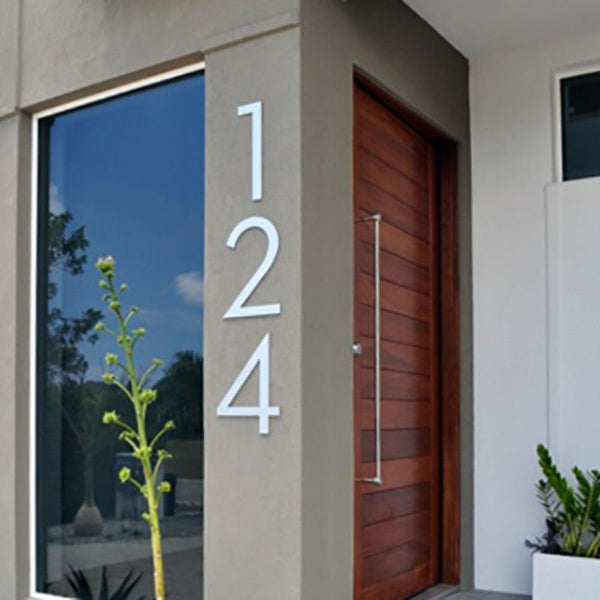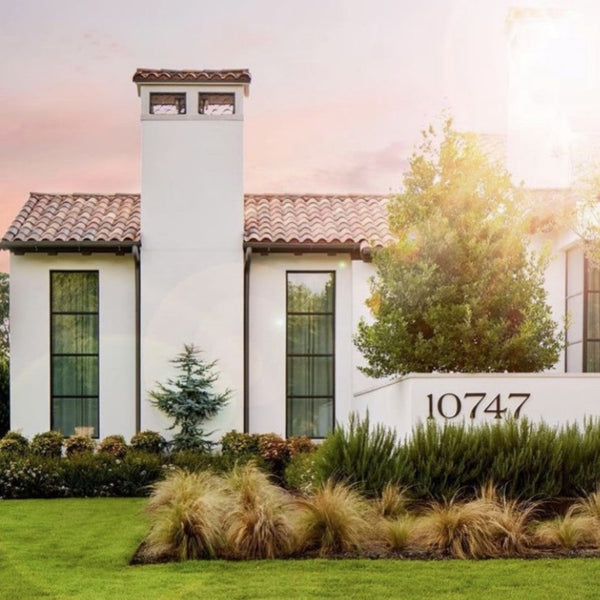Most of us receive mail daily, taking advantage of something we may not even realize is a luxury. Can you imagine a time before house numbers? Have you ever thought about how people found homes and how mail carriers delivered mail before home addresses? Join us as we look at a blast from house numbers’ past.

Delivering Mail Before House Numbers Existed
Before house numbers, businesses used illustrative signs such as dragons or cobras help mail carriers find their business. People had to rely on thorough descriptions to find the right location. Over time, people realized that a house numbering system could solve many issues with mixing up mail and finding residences.
One of the first recorded streets with house numbers is the famous Prescot Street in Goodman’s Fields of the UK. The house numbers appeared in 1708 and set the tide for house numbering everywhere. When house numbering first came about, homes followed a consecutive numbering system, which has since evolved to the even and odd numbering system we see in most American neighborhoods today.
Like most early systems, nobody regulated house numbering, and the methods varied greatly, even among homes on the same street. Some homes and businesses had several numbers and addresses that didn’t make sense. There was a high volume of irregularities and duplicates because homeowners chose their addresses with no rhyme or reason. With no regulations in place, nobody knew any better.
Early mail carriers in the American colonies transported correspondence to a designated drop off location. In Massachusetts, Richard Fairbanks' Boston tavern received all the mail for local residents. This practice was one colonists adopted from England.
As postmen went on their daily quests to deliver mail, their best aid was asking people on their route for clues. There were no standard regulations for addressing a letter, so letter carriers had to deal with an array of bizarre descriptions and then set forth on a quest to deliver letters. They’d have to make sense of descriptions such as “To my brother Howard, Down a Close, Edinburgh. He has a peg leg.”
When their every effort was unsuccessful, and they could not deliver a letter, they returned it to the “Dead Letter Office.” As the name suggests, letters either went there to die or got delivered to their destination after some further investigative work.
The United States Postal Service established a dead letter office in 1825 and by 1893, 20,000 pieces of mail passed through the office daily. Known today as mail recovery centers, these offices attempt to redirect these parcels to the proper destination.
Regulating the Numbers
Worldwide house numbering became popular in the 1800s.
England
In 1855, the Metropolitan Management Act began implementing regulations regarding addresses in England. It was the beginning of organized mail delivery and home addresses. In 1855, the power to regulate and control street names and numbers was put in place and regulated by the Board of Works. They had their work cut out for them. It was their job to simplify the home numbering and street naming systems.
Later that year, the Board of Works helped split London into ten separate districts, each having a different code, but different from the postal codes we know today, which came about in the 1960s. The codes were usually acronyms such as EC(Eastern Central) and WC (Western Central).
With plenty of pushback, the Board of Works changed 4,800 street names in London by 1871 and renumbered about 100,000 houses. This was an incredible stride in house numbers, postal codes, and mail delivery, but we still had a long way to go. At this point, homeowners were using brass house numbers, a material still popular and durable for addresses and plaques today.

United States
The first house numbers to appear in the American colonies came from the British, who used the numbers to track revolutionary colonists. The numbers were not standardized, however, and were therefore not good for locating homes or businesses.
The Philadelphia system was the first attempt to standardize house numbering. Under this system, houses on one side of the street received even numbers and odd numbers used for the other side of the street, as is common in most neighborhoods today.
Many modern US cities, such as New York City and Salt Lake City, are built on a grid system which lends further structure and limits the range of house numbers on city blocks.

House Numbers Today
Our house numbering system has come so far since the days of arbitrary symbols and random numbers and names. London spearheaded a movement that many other countries followed suit, and we have perfected a pretty good system today. Imagine awaiting your Amazon packages without addresses today.
We pass by street names and house numbers daily without giving them much thought. We’re lucky to live in a time where house numbers and street names are regulated and make sense. We never have to worry about our mail getting to us or have to construct bizarre descriptions when lettering an envelope.

Not only are house numbers necessary to show first responders, visitors, and friends where your home is, but it can also show off your style through your address. Why not make your address stand out?

Our custom number and letter-making techniques empower our homeowners while adding style and value to their property. Whether you want metal address numbers, mailbox numbers, decals, stencils plaques, exterior lettering, or another specialized product, we use our architectural background and specialized skills to help your style and vision come to life. Visit our website today to check out all your options.
Infographic
The majority of us make use of something we might not even be aware of as a luxury—daily mail. Can you envision life without house numbers? Have you ever considered how individuals located houses and how postal carriers distributed mail prior to the invention of home addresses? Join us as we view a home number from the past.




